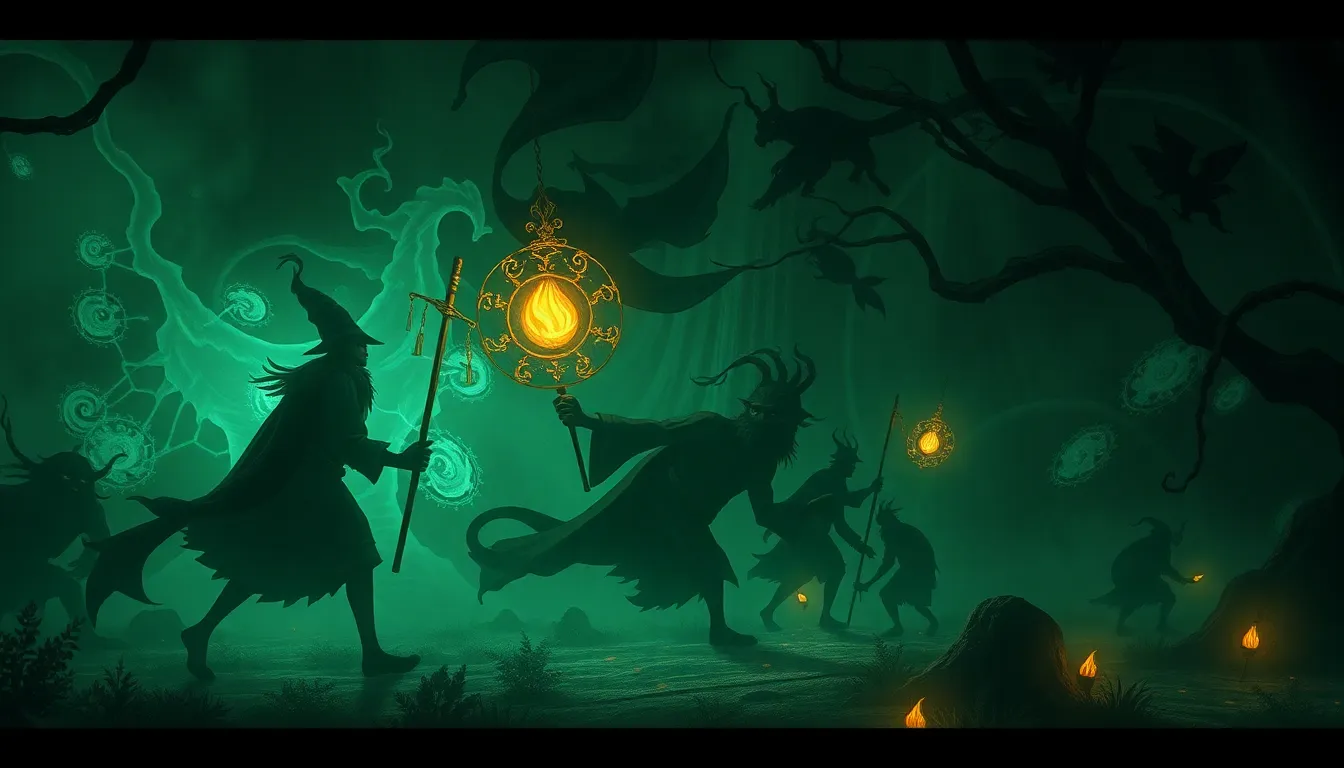The Sacred Heart: The Core of Mythical Locations
I. Introduction
The Sacred Heart represents a profound symbol across various cultures, embodying love, compassion, and the divine connection between humanity and the sacred. In the Christian tradition, it specifically refers to the physical heart of Jesus Christ, symbolizing his love for humanity. However, the concept transcends religious boundaries, appearing in various forms in different cultures, often linked to themes of love and sacrifice.
Mythical locations, on the other hand, serve as powerful narratives that capture the imagination, providing a rich tapestry of stories that reflect human experiences, beliefs, and values. From the enchanted realms of Avalon to the lost city of Atlantis, these places often hold spiritual significance, serving as a backdrop for exploration of human existence.
This article aims to explore the intersection of the Sacred Heart and mythical places, uncovering how these two elements interact and influence each other across different cultures and narratives.
II. Historical Context of the Sacred Heart
A. Origins of the Sacred Heart concept
The roots of the Sacred Heart can be traced back to early Christianity, where it began as a symbol of Christ’s love and sacrifice. The devotion to the Sacred Heart gained significant momentum in the 17th century through the efforts of Saint Margaret Mary Alacoque, who promoted the veneration of the Sacred Heart as an expression of divine love.
B. Evolution through religious and cultural lenses
Over the centuries, the Sacred Heart has evolved, integrating into various religious practices beyond Catholicism. In contemporary spirituality, it often symbolizes the universal quest for love and connection, transcending its original Christian context.
C. The Sacred Heart in art and literature
The Sacred Heart has inspired countless masterpieces in art and literature. From paintings by renowned artists like Francisco de Goya to poetic explorations in the works of Rainer Maria Rilke, the imagery of the Sacred Heart captures the essence of love and sacrifice, resonating deeply with audiences throughout history.
III. Mythical Locations in World Culture
A. Definition and characteristics of mythical locations
Mythical locations are places that exist primarily in folklore, mythology, and religious texts. They often possess supernatural qualities and serve as settings for significant events or narratives. Characteristics include:
- Unreachable or hidden nature
- Significance in storytelling or spiritual practices
- Symbolism that reflects cultural values and beliefs
B. Examples of famous mythical locations
Some of the most notable mythical locations include:
- Atlantis: A legendary island described by Plato as an advanced civilization that ultimately fell into the ocean.
- Avalon: The mystical isle from Arthurian legend, known for its association with King Arthur and magical healing.
- Shangri-La: A fictional utopia described in James Hilton’s novel “Lost Horizon,” symbolizing peace and tranquility.
C. The role of mythical locations in folklore and storytelling
Mythical locations serve as crucial elements in folklore and storytelling, often representing the journey of the hero, the quest for knowledge, or the pursuit of love and redemption. They provide a framework for exploring complex themes and human experiences, allowing cultures to pass down wisdom through generations.
IV. The Sacred Heart as a Symbol
A. Religious interpretations of the Sacred Heart
In religious contexts, the Sacred Heart is viewed as a symbol of divine love, mercy, and compassion. Devotees believe that through the Sacred Heart, one can find solace, forgiveness, and a deeper connection to the divine.
B. The Sacred Heart in spirituality and mysticism
Beyond its religious roots, the Sacred Heart has found a place in spirituality and mysticism. Many practitioners see it as a pathway to understanding the nature of love and the universe, often incorporating it into meditation and spiritual practices.
C. Psychological implications of the Sacred Heart in human experience
The Sacred Heart resonates psychologically as it embodies universal themes of love, connection, and sacrifice. It serves as a reminder of the human capacity for empathy and compassion, influencing personal growth and emotional healing.
V. Intersections of the Sacred Heart and Mythical Locations
A. Sacred Heart sites that are deemed mythical
Certain locations associated with the Sacred Heart have taken on mythical qualities, often linked to miraculous events or profound spiritual experiences. These sites include:
- Sacré-Cœur Basilica: Situated in Paris, this basilica is not just an architectural marvel but also a place where many seek spiritual renewal.
- Mount Gargano: A site in Italy where, according to legend, the apparition of the Sacred Heart has occurred.
B. How the Sacred Heart influences the creation of mythical narratives
The Sacred Heart often serves as a catalyst in the creation of mythical narratives, inspiring tales that emphasize love, redemption, and the human experience. These narratives reflect the cultural significance of the Sacred Heart, intertwining it with local myths and legends.
C. Case studies of places where the Sacred Heart is central to local myth
In various cultures, the Sacred Heart is central to local myths, often telling stories of love and sacrifice. For example, in South America, the Sacred Heart is often linked to indigenous legends, where it symbolizes harmony between nature and humanity.
VI. The Sacred Heart in Literature and Popular Culture
A. Analysis of literary works featuring the Sacred Heart
The Sacred Heart has been a source of inspiration in literature, often symbolizing love’s transformative power. Notable works include:
- “The Song of Songs”: A biblical text that beautifully encapsulates love’s depth and the longing for connection.
- “The Heart of the Matter” by Graham Greene: A profound exploration of morality and love in the context of war and faith.
B. The portrayal of the Sacred Heart in films and media
In modern media, the Sacred Heart often appears as a symbol of hope and redemption. Films that explore themes of love and sacrifice frequently incorporate imagery associated with the Sacred Heart, enhancing the emotional narrative.
C. The impact of the Sacred Heart on modern myth-making
As society evolves, the Sacred Heart continues to influence modern myth-making, inspiring new stories and interpretations that resonate with contemporary values. Its enduring symbolism fosters a connection to deeper human experiences.
VII. Pilgrimages and Sacred Journeys
A. Notable pilgrimages associated with the Sacred Heart
Pilgrimages dedicated to the Sacred Heart attract thousands of visitors seeking spiritual renewal. Notable sites include:
- Sacré-Cœur Basilica in Paris: A major pilgrimage destination for those seeking peace and connection to the divine.
- Montmartre: The surrounding area is rich in history and spirituality, enhancing the pilgrimage experience.
B. The experience of visitors to sacred and mythical locations
Visitors to these sacred and mythical locations often report profound spiritual experiences, including feelings of peace, connection, and transformation. These journeys foster a deeper understanding of the self and the divine.
C. The spiritual significance of these journeys
Such pilgrimages hold immense spiritual significance, allowing individuals to engage with their beliefs and seek healing in a sacred context. The journey becomes a metaphor for personal growth, emphasizing the importance of love and compassion.
VIII. Contemporary Interpretations of the Sacred Heart
A. The Sacred Heart in modern spirituality and new-age beliefs
In contemporary spirituality, the Sacred Heart has found new interpretations, often embraced by new-age beliefs that emphasize universal love and healing. It symbolizes the journey toward self-realization and connection with the cosmos.
B. Shifts in perception of the Sacred Heart in contemporary society
As society evolves, perceptions of the Sacred Heart are shifting, incorporating diverse cultural interpretations that reflect modern values and experiences. This evolution enhances its relevance in today’s spiritual landscape.
C. The resurgence of interest in mythical locations and their spiritual meanings
Recently, there has been a resurgence of interest in mythical locations and their spiritual significance. Individuals are increasingly seeking experiences that connect them to the mystical and the divine, finding meaning in ancient narratives and sacred sites.
IX. The Future of the Sacred Heart and Mythical Locations
A. Emerging trends in spirituality and mythology
As spirituality evolves, emerging trends highlight a growing desire for connection and understanding of the Sacred Heart and mythical locations. This trend emphasizes




